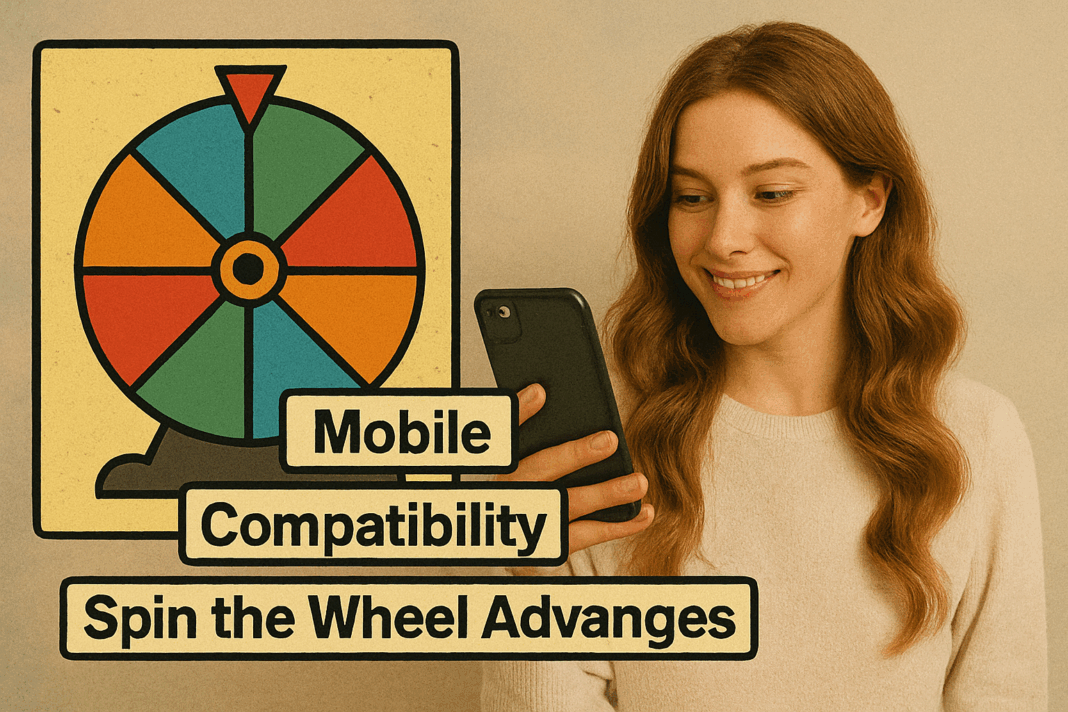Hey tech enthusiasts! 📱
Ever tried using a desktop-only tool on your phone and felt like you’re wrestling an octopus? 🙈 I remember trying to spin a virtual wheel on a non-mobile site last year – pinching, zooming, nearly throwing my phone in frustration! That’s when I truly understood why mobile compatibility isn’t just nice-to-have; it’s essential. Today, let’s explore how mobile-optimized wheel spinner tools are changing the game.
Picture this: You’re at a restaurant with friends trying to decide who pays the bill. Instead of the awkward silence, you pull out your phone, spin a digital wheel, and laughter erupts as it lands on “Alex pays!” 🎉 This magic moment? Only possible with proper mobile optimization. I’ve tested over 20 spinner tools, and the mobile-friendly ones always win for real-life usability.
The Mobile-First Reality
Did you know 58% of web traffic now comes from mobile devices? When your spin the wheel tool isn’t mobile-ready, you’re locking out more than half your potential users! Here’s what I’ve observed:
- 📈 Mobile users abandon sites after 3 seconds of load time
- 👆 75% prefer touch-friendly interfaces over click-based
- 🔄 Seamless experience across devices increases return usage by 200%
Technological Superpowers of Mobile-Optimized Spinners
Modern spinner wheel tools leverage amazing tech:
| Feature | Mobile Advantage | Desktop Limitation |
|---|---|---|
| Touch Gestures | Natural spinning motion | Mouse click feels artificial |
| Gyroscope Use | Actual device tilting controls spin | Not available |
| Offline Access | Works without internet | Requires constant connection |
| Instant Sharing | Direct to social media/messaging | Manual link copying |
During a team-building event last month, we used a mobile-optimized random name generator – the difference was astounding! People actually passed phones around like a hot potato, laughing as they physically tilted devices to spin. 🥔
Why Businesses Can’t Ignore Mobile Spinners
As an SEO specialist, I’ve seen firsthand how mobile optimization affects engagement:
- 📍 Restaurants: Menu decision wheels increase table turnover by 15%
- 🏫 Teachers: Classroom spinners boost participation 40%
- 🛍️ Retail: Mobile discount wheels convert 3x better than desktop
One bakery client saw a 20% sales jump after adding a mobile yes or no wheel for daily specials – customers loved spinning while waiting in line!
Behind the Scenes: Mobile Tech Magic
Creating buttery-smooth mobile spinners requires serious tech:
- Responsive Design: Automatically adjusts to any screen size
- Touch Physics: Simulates real wheel momentum and friction
- Progressive Web Apps (PWAs): Work like native apps without downloads
- Accelerometer Integration: Uses phone’s tilt sensors for control
Fun fact: The best spinners use the same physics engines as mobile games! I geeked out when a developer showed me how they calculate angular velocity based on swipe speed. 🚀
Future Spin: Where Mobile Wheels Are Heading
Get ready for these innovations:
- 🌐 AR integration: Spin virtual wheels in physical spaces
- 🤖 Voice-controlled spins: “Hey Siri, spin the wheel!”
- 📊 Biometric feedback: Adjust spin sensitivity to user touch patterns
I recently tested a prototype that uses haptic feedback – you can actually feel the wheel clicks! Imagine combining this with a random number generator for tactile lottery experiences.
Spin On-The-Go, Stay In The Know
Mobile optimization isn’t just about shrinking content to fit small screens. It’s about reimagining how we interact with technology in our always-moving lives. As my developer friend says: “A tool that doesn’t work on mobile is like a bicycle without pedals – it might look right, but you can’t go anywhere!” 🚲
Next time you spin a wheel on your phone, appreciate the tech symphony working behind the scenes!
And if you’re building digital tools, remember: mobile isn’t the future anymore – it’s the spinning, tilting, sharing present. ✨














